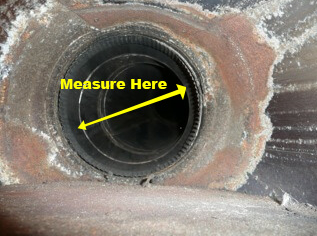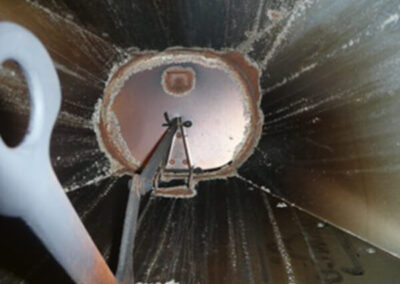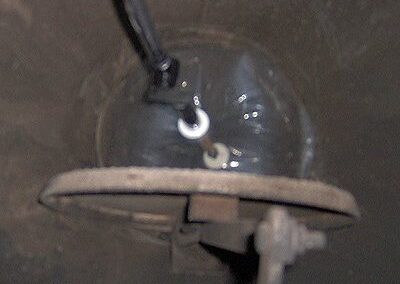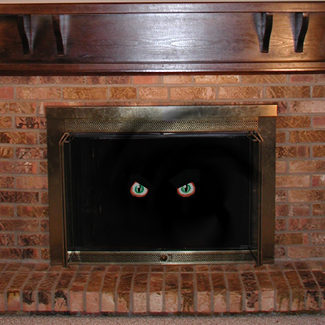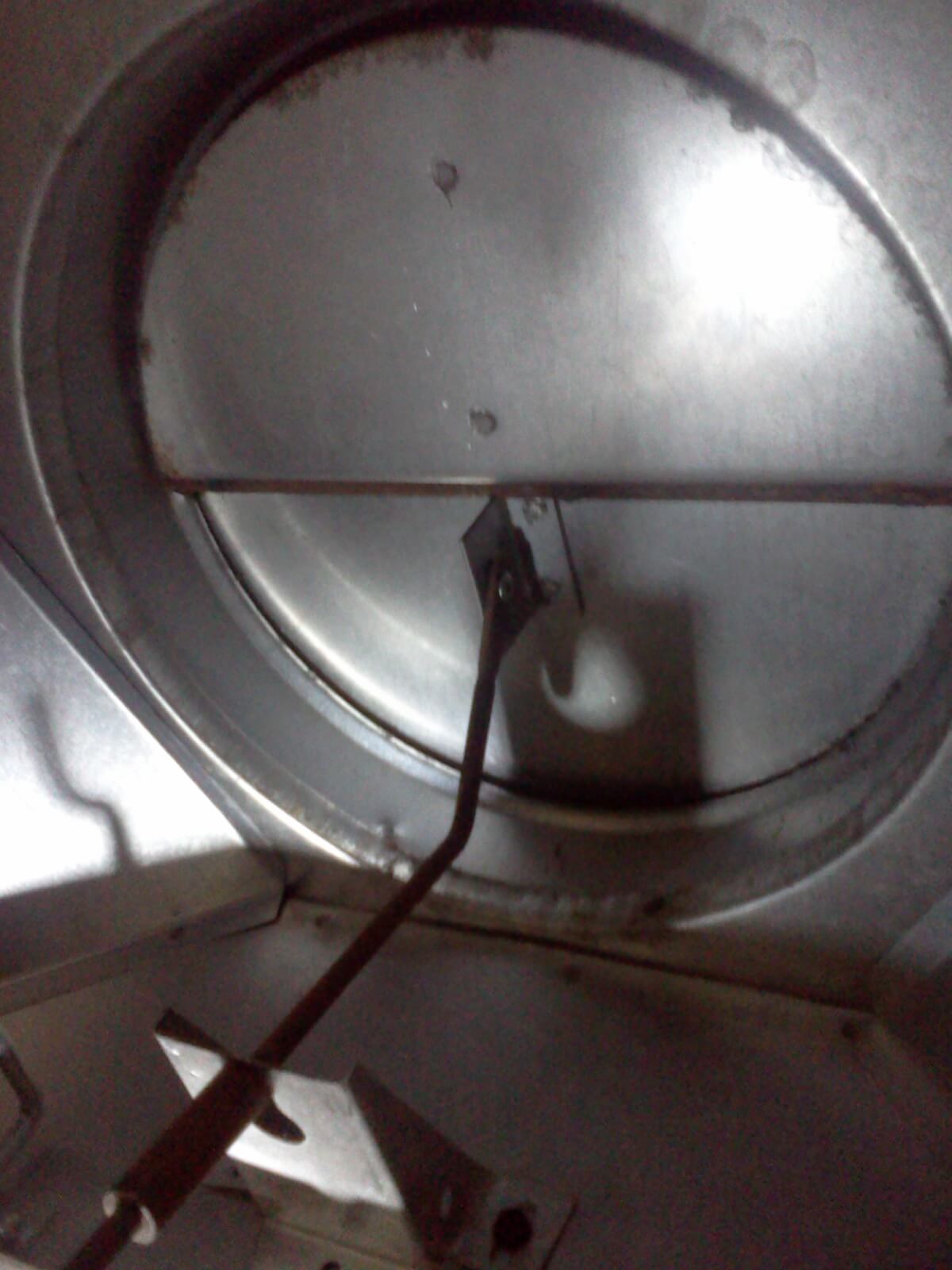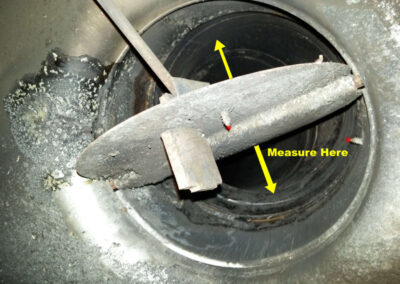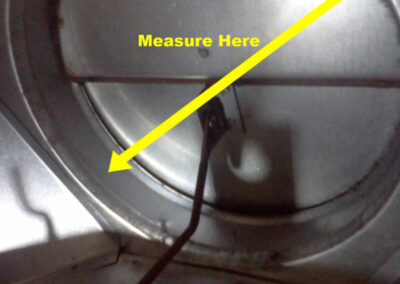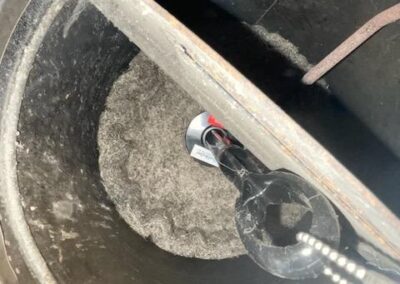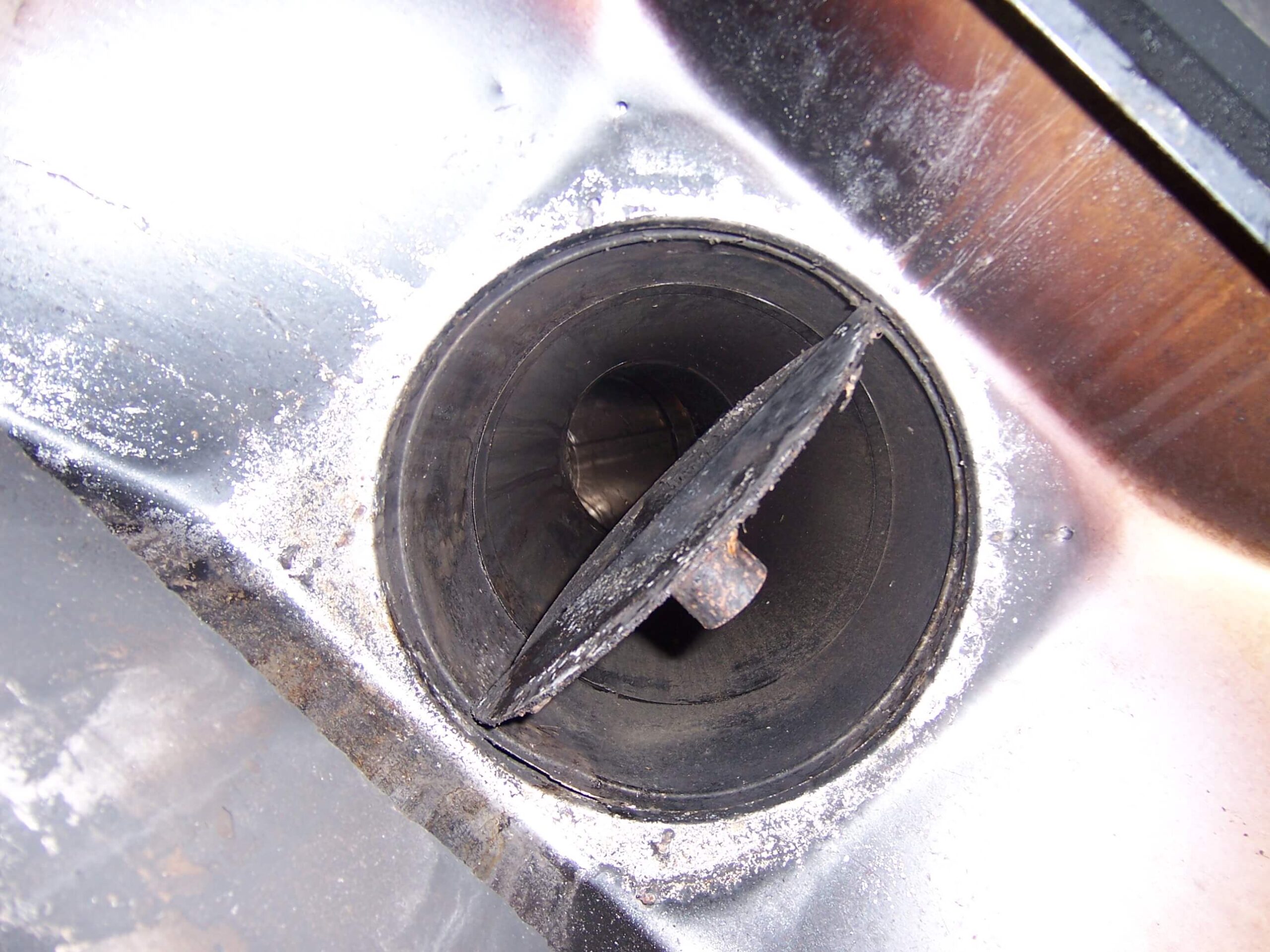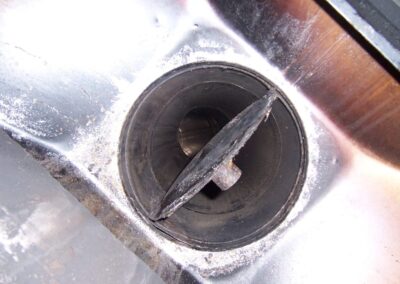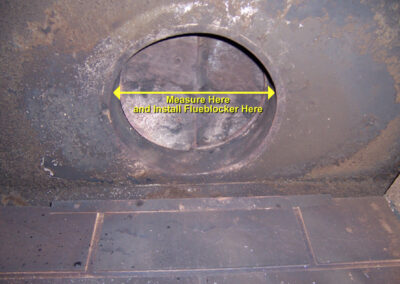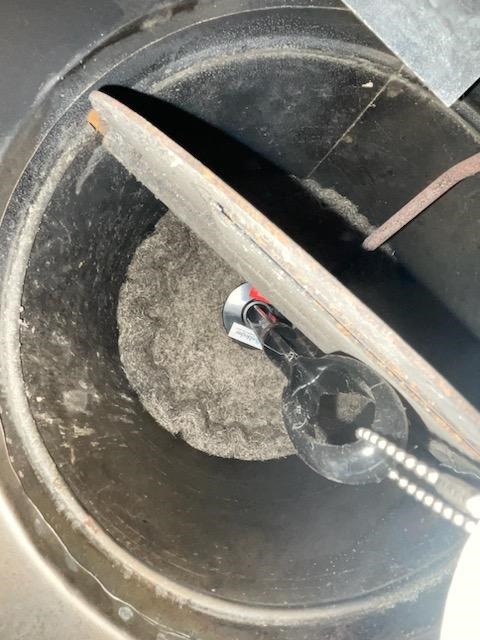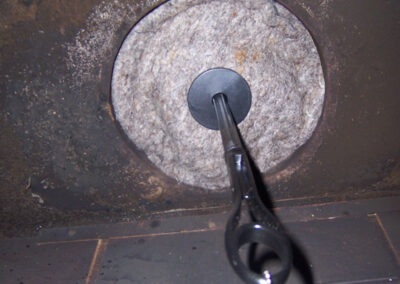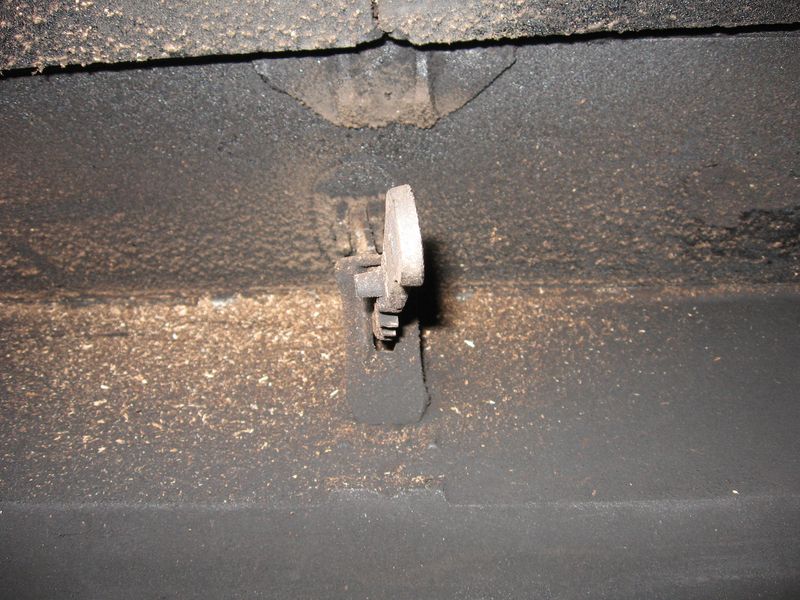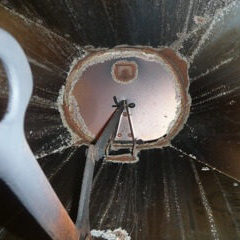
# 4: I Have a Round Drop-down Trapdoor Style Damper. How do I Plug the Round Flue Pipe?
# 4: I Have a Round Drop-down Trapdoor Style Damper. How do I Plug the Round Flue Pipe?
Fireplace #4: Round Trapdoor Side-Hinged Damper Covering a Round Flue
This is the easiest of all the fireplaces to plug. The damper drops out of the way, and you get a clear shot at the round chimney flue. These sheet metal dampers are often fitted on Majestic or Superior brand zero-clearance pre-fabricated fireplaces. These were popular in the 70’s and early 80’s, and it is hard to get damper parts for them anymore. The sheet metal doors often warp, then the asbestos ring falls off the edge of the door. At that point they drop open on their own.
Wood Burning Fireplace Users:
Open the damper and make a diameter measurement of the hole just above the damper (image 4-1), then buy a Flueblocker that will fit in that hole. Or buy one that is a bit big for the hole, since you can then trim it down to fit with a sharp pair of scissors. Here are some examples:
Example 1: You measure 8” diameter = You buy a 9” Round Flueblocker
Example 2: You measure 9” diameter = You buy a 9” Round Flueblocker
Example 3: You measure a 11” diameter = You buy a 12” Round Flueblocker
Flueblockers are physically a little bit larger than their labeled size. This is so they can press in to fit and hold in place by pressure tension. When yours arrives you just press it right into place into the round chimney flue. It is up to you if you want to close the damper below the plug.
IMPORTANT! ESPECIALLY FOR FORGETFUL PEOPLE!:
If you close the damper below the Flueblocker, mark the fireplace VERY CLEARLY that the chimney is plugged. It is easy to forget about the Flueblocker up above the damper. You MUST open the damper AND remove the Flueblocker to use the fireplace.
Gas Log Users: If you have a gas log set in this fireplace, you have a decision to make.
Here are your two options:
- You can turn off the gas line to this fireplace and put in a small 9×9 or 12×12 Chimney Balloon just above the damper. This way if you have a house guest that fires up the gas logs without asking, he won’t back up exhaust fumes into the house. The Chimney Balloon will burst and fall out since it is designed to do that. The downside to this, is the Chimney Balloon is an inflatable and not as durable as a Flueblocker.
- You can turn off the gas line and remove or permanently disable the gas log set and then put in a Flueblocker. Do NOT light a fire under a Flueblocker. If you do light a fire under a Flueblocker fumes backup into the house and bad things happen…enough said.
Gas logs are a separate conversation. We also have an article on how gas logs can poison you or pick your pocket over time.
